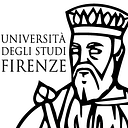Gift Exchanging Practices between the Kingdom of the Two Sicilies and the Ottoman Empire: ‘Cose Turche’ and Strange Animals
From Firenze University Press Journal: CROMOHS
Rosita D’Amora, Università del Salento
Hacı Hüseyin Efendi, special envoy of the Ottoman sultan, Mahmud I (b. 1696, r.1730–54), landed in Naples on 31 August 1741, together with a large retinue of more than 60people, and rich gifts for King Charles of Bourbon (Carlo di Borbone, b.1716, r.1734–59 as King of the Two Sicilies and 1759–88 as Charles III of Spain, Carlos III de España).1The envoy had first stopped in Sicily, in the port town of Messina, where he arrived almost two months earlier, on 7 July, in order to spend there the required 12 days of sciorino(the exposure of goods in the fresh air so that they could be purified) and a quarantine period of 40days, which was later reduced to 30 in consideration of the good health of the special envoy, his retinue and the entire crew.
The envoy spent the days of sciorino on the boat and was then hosted in a place called ‘Paradiso,’in the palace of Prince Borracchini, which, allegedly, had been tastefully furnished beforehand ‘in Turkish style with various sofas covered with rich fabrics, curtains, carpets, mirrors, crystals, and other pieces of furniture, all rich and of a good taste.’ Throughout his stay in Messina, the king’s representative in town, the Marquis of Torreblanca, together with other local nobles, made every effort to look after and entertain the Ottoman envoy. They visited him on several occasions, sent him abundant refreshments and organised different entertainment, such as harquebus shooting expeditions as well as boat and riding excursions in the surrounding area.
He was also presented some locally produced merchandise that, it seems, he had expressly requested to see, buying‘some rolls of silk and various carpets’ (alcune pezze di drappidi seta, e varj tapeti)’,while also ordering some other products for his personal use, which hewould collect when passing Messina again on his way back to Constantinople.On 15 August the Ottoman envoy was invited to go and admire a gran festathat was celebrated in Messina every year,3and to attend, on that same day, a serenataand a ball organised expressly in his honour in the palace of the Prince of Villafranca. The Ottoman envoy declined both invitations, pleading that it was contrary to the customs of his country to make a public appearance before having been received by the king.
Finally, on the night of 19 August, after he was presented with ‘various edibles’ (varj comestibili), Hacı Hüseyin Efendi, together with his retinue, boarded for the capital of the kingdom on the same Neapolitan war ships that had brought him to Messina: the San Filippo il Reale and the San Carlo. Due to the unfavourable winds, though, the ships could not leave the Messina harbour till 22 August when they eventually set sail at around ten o’ clock in the morning. All these details, and many others, are related in a fascinating anonymous contemporary account describing the arrival and stay of the Ottoman envoy in the Kingdom of the Two Sicilies and dealing, in particular, with the public audience he had with King Charles of Bourbon on 18 September 1741, which was also represented in a beautiful and detailed etching by Francesco Sesoni (b.1705–?), accompanying the text.
Many other details and very interesting behind-the-scenes information about this visit can also be gathered through the rich documentation, largely still unexplored, kept in the Archivio di Stato di Napoli (hereafter ASN), covering the history of the political, commercial and cultural relations between the Kingdom of the Two Sicilies and the Ottoman Empire from the events leading to the stipulation of the 1740s treaty until 1861, when the diplomatic relations between the two states came to an end due to the annexation of the Kingdom of the Two Sicilies to the Kingdom of Italy.
A close reading of the Relazione, comparing its rhetoric and the information that it provides with the information contained in the archival documents, sheds useful light on the rather theatrical visit of the Ottoman envoy to the capital of the Kingdom of the Two Sicilies and the exchange of gifts that took place on this occasion. Archival documents also help clarify some circumstances regarding the preparation of the Relazione itself and its narrative celebrating a significant diplomatic accomplishment byKing Charles, as well as quite clearly showing how the ruling monarchy was very keen on having this text published and distributed at the earliest possible time.
DOI: https://doi.org/10.36253/cromohs-13645
Read Full Text: https://oajournals.fupress.net/index.php/cromohs/article/view/13645
